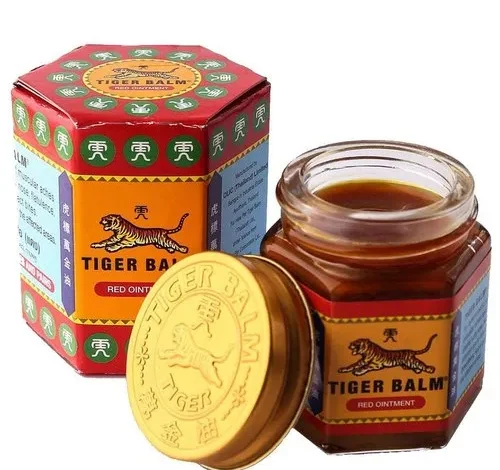Why Is Tiger Balm Illegal: The Real Reasons Behind the Ban

Tiger Balm is one of the world’s most famous pain relief ointments — a small jar with a big reputation. For over a century, it’s been trusted for easing sore muscles, headaches, and joint pain. But if it’s so widely loved, then why is Tiger Balm illegal in some countries? This question has puzzled many travelers and consumers who’ve found the product suddenly banned or restricted.
why is tiger balm illegal detailed article, we’ll dive into the fascinating history, composition, and controversies behind Tiger Balm’s legality. You’ll discover why this humble balm has sparked legal concerns, which ingredients are under scrutiny, and where it’s actually banned. We’ll also explore safe alternatives and the global stance on herbal medicines.
Let’s unravel the mystery behind why Tiger Balm is illegal in certain regions — and whether it truly deserves its controversial reputation.
The Origins of Tiger Balm: A Healing Legend
Before we explore why is Tiger Balm illegal, it’s important to understand its roots. Tiger Balm was first developed in the 1870s by Aw Chu Kin, a Chinese herbalist living in Burma (now Myanmar). His sons, Aw Boon Haw and Aw Boon Par, perfected the formula and founded the famous Tiger Balm brand in the early 1900s.
Their vision was simple: create a natural remedy for everyday aches and pains using traditional Chinese medicine (TCM). The product’s name, “Tiger Balm,” symbolizes strength and vitality in Chinese culture — traits the balm promised to deliver.
Over time, the balm became a household staple across Asia, and eventually, the world. Today, it’s sold in more than 100 countries and used by millions.
What’s Inside Tiger Balm? The Secret Formula
To understand why is Tiger Balm illegal in some areas, we first need to look at what’s actually inside it.
The traditional Tiger Balm formula contains:
| Ingredient | Purpose |
| Camphor (11%) | Provides cooling relief and helps reduce pain. |
| Menthol (10%) | Creates a soothing, cooling sensation and relieves itching. |
| Cajuput Oil | Acts as an antiseptic and enhances absorption. |
| Clove Oil | Has anti-inflammatory and anesthetic properties. |
| Cassia Oil (Cinnamon Oil) | Adds warmth and boosts circulation. |
| Petrolatum/Paraffin | Serves as the base that holds everything together. |
While these ingredients are natural, they’re also potent. And it’s this potency — particularly camphor and menthol — that has led to restrictions in certain countries.
The Real Question: Why Is Tiger Balm Illegal?
So, why is Tiger Balm illegal? The answer isn’t simple. In most places, it’s not entirely “illegal,” but rather restricted or banned for sale due to regulatory or ingredient-related concerns.
Here are the main reasons behind the ban or restriction:
1. Camphor Content
Camphor is the key pain-relieving ingredient in Tiger Balm. However, in high doses, it can be toxic if ingested or absorbed through broken skin.
- Some countries, like the United States, Canada, and parts of Europe, have strict limits on camphor concentration in topical products.
- The FDA allows up to 11% camphor, but older or imported Tiger Balm versions may exceed this limit.
If a product contains more than the legal limit, it’s considered unsafe — and therefore illegal to sell.
2. Unapproved Medicinal Claims
In some regions, Tiger Balm is classified as a drug rather than a cosmetic or over-the-counter item. That means it must go through government approval to make health claims such as “relieves arthritis” or “treats headaches.”
If a country hasn’t officially approved those claims, the product can’t legally be sold — even if it’s harmless.
3. Animal-Derived Ingredients (Historical Versions)
While modern Tiger Balm doesn’t contain animal products, older versions reportedly used tiger bone extract — a banned substance in many countries due to wildlife protection laws.
This historical link still causes confusion and stigma. Some consumers assume the product still involves animal parts, leading to import bans in certain regions that strongly enforce wildlife trade laws.
4. Labeling and Import Regulations
Another reason behind why is Tiger Balm illegal in some places is simply labeling issues.
- If labels don’t list ingredients clearly in the local language, they can’t be imported.
- Some versions may also lack required safety warnings.
Even small discrepancies can trigger a customs rejection or recall.
Countries Where Tiger Balm Faces Restrictions
While Tiger Balm is available in most countries, a few have placed specific limitations or bans on it due to the reasons mentioned above.
Here’s an overview:
| Country | Status | Reason |
| United States | Legal (FDA approved up to 11% camphor) | Older or unregulated imports may be banned. |
| Canada | Restricted | High camphor levels exceed safety standards. |
| Australia | Legal but regulated | Must comply with Therapeutic Goods Administration (TGA) labeling. |
| European Union | Restricted in some nations | Safety regulations on menthol and camphor concentration. |
| India | Legal | Widely used and manufactured domestically. |
| United Arab Emirates (UAE) | Occasionally restricted | Misunderstanding due to old wildlife trade laws. |
| Singapore | Legal and manufactured locally | Fully regulated under national standards. |
In most cases, bans are temporary or specific to certain batches rather than the product as a whole.
The Misconceptions Around the Ban
Many people hear that Tiger Balm is “illegal” and immediately assume it’s dangerous. But that’s not the whole story.
Here are some common misconceptions:
- Myth: Tiger Balm contains tiger bones.
- Fact: Modern Tiger Balm is 100% free of animal ingredients.
- Fact: Modern Tiger Balm is 100% free of animal ingredients.
- Myth: It’s banned everywhere.
- Fact: It’s legally sold in over 100 countries. Only certain formulations are restricted.
- Fact: It’s legally sold in over 100 countries. Only certain formulations are restricted.
- Myth: It causes severe health issues.
- Fact: When used as directed, it’s safe and effective. Problems only arise with misuse.
- Fact: When used as directed, it’s safe and effective. Problems only arise with misuse.
So, why is Tiger Balm illegal in some areas? Usually, it’s about safety limits, not danger.
Health Concerns and Safety Tips
Even though Tiger Balm is generally safe, it’s still a strong topical product. Overuse or improper use can cause irritation or allergic reactions.
Safety Tips When Using Tiger Balm
- Don’t apply on broken or sensitive skin.
- Avoid using near eyes, mouth, or genitals.
- Wash your hands after application.
- Keep it away from children — ingestion can be harmful.
- Do not cover the area tightly after applying; it can cause overheating or burns.
If you experience severe redness, itching, or swelling, discontinue use immediately and consult a doctor.
Legal Alternatives to Tiger Balm
If you’re in a country where Tiger Balm is banned or restricted, don’t worry — there are many legal and effective alternatives available.
Here are some popular options:
| Alternative Product | Key Ingredients | Benefits |
| Biofreeze Gel | Menthol | Cooling relief for sore muscles. |
| Vicks VapoRub | Camphor, Menthol, Eucalyptus Oil | Similar aroma and soothing sensation. |
| Deep Heat Cream | Methyl salicylate, Menthol | Provides warming pain relief. |
| Icy Hot Balm | Menthol, Camphor | Alternating cool and warm sensations for fast relief. |
| Essential Oil Blends | Peppermint, Lavender, Eucalyptus | Natural and gentle alternative. |
These products are regulated in most countries and offer similar comfort without legal issues.
The Role of Regulation in Herbal Medicines
Tiger Balm’s controversy highlights a bigger issue — the regulation of herbal and traditional medicines worldwide.
Different countries have varying definitions of what counts as “medicine.”
- In Asia, Tiger Balm is often treated as a traditional remedy, sold freely.
- In the U.S. or Europe, it’s regulated as a medical product requiring clinical approval.
This inconsistency is one of the main reasons behind the confusion about why is Tiger Balm illegal.
Regulatory agencies like the FDA (U.S.), TGA (Australia), and EMA (Europe) work to ensure that products meet safety and labeling standards. These rules protect consumers — but they can also make it harder for traditional products to enter global markets.
Cultural Significance and Enduring Popularity
Despite the legal hurdles, Tiger Balm remains a beloved part of many households. It’s not just a pain reliever; it’s a piece of cultural history.
In Asia, Tiger Balm is often seen as a symbol of family care and traditional wisdom. Parents pass down their tiny jars to the next generation, trusting its familiar scent and fast relief.
Even athletes and travelers swear by it for muscle cramps, insect bites, and congestion.
So, even when people ask, “Why is Tiger Balm illegal?” — it’s clear that its legacy and trust continue to outweigh the confusion.
Final Thoughts: Why Is Tiger Balm Illegal?
After exploring every angle, we can finally answer the question: why is Tiger Balm illegal in some places?
It’s mainly because of:
- Strict camphor regulations,
- Labeling and import issues, and
- Old misconceptions about animal-derived ingredients.
But in most countries, it’s still perfectly legal and safe when used correctly.
Tiger Balm’s enduring success shows that traditional remedies can stand the test of time — even in a world full of regulations and red tape.
So, next time you hear someone ask “why is Tiger Balm illegal?”, you’ll know the truth: it’s not really banned everywhere, just misunderstood. With proper use, it remains one of the most trusted natural remedies for pain and discomfort across generations.
You may also read
Tesla China Battery Project Renewable Energy: Pioneering the Future of Sustainable Power





